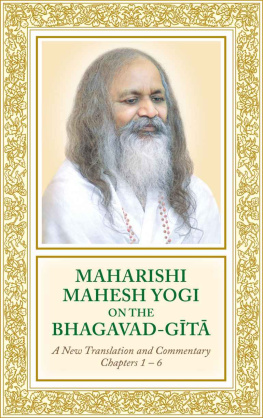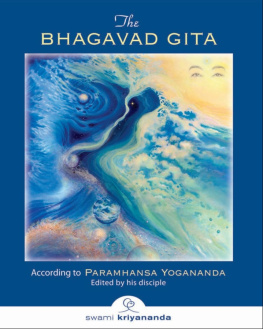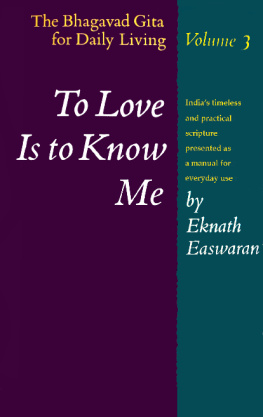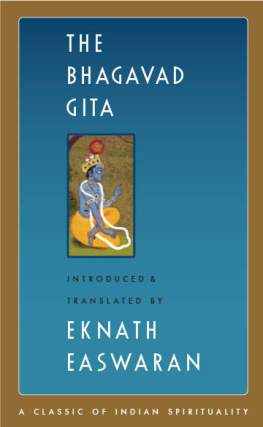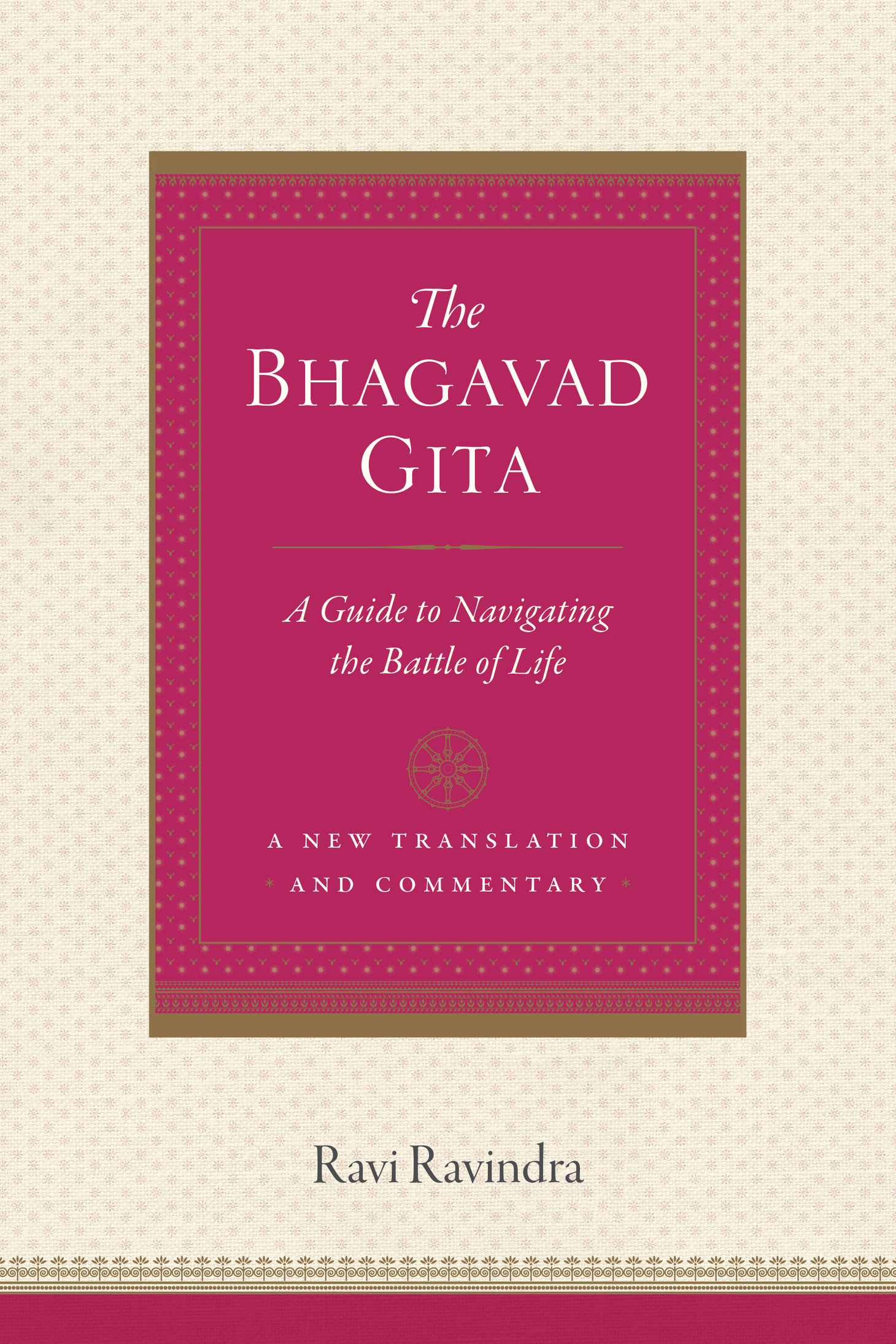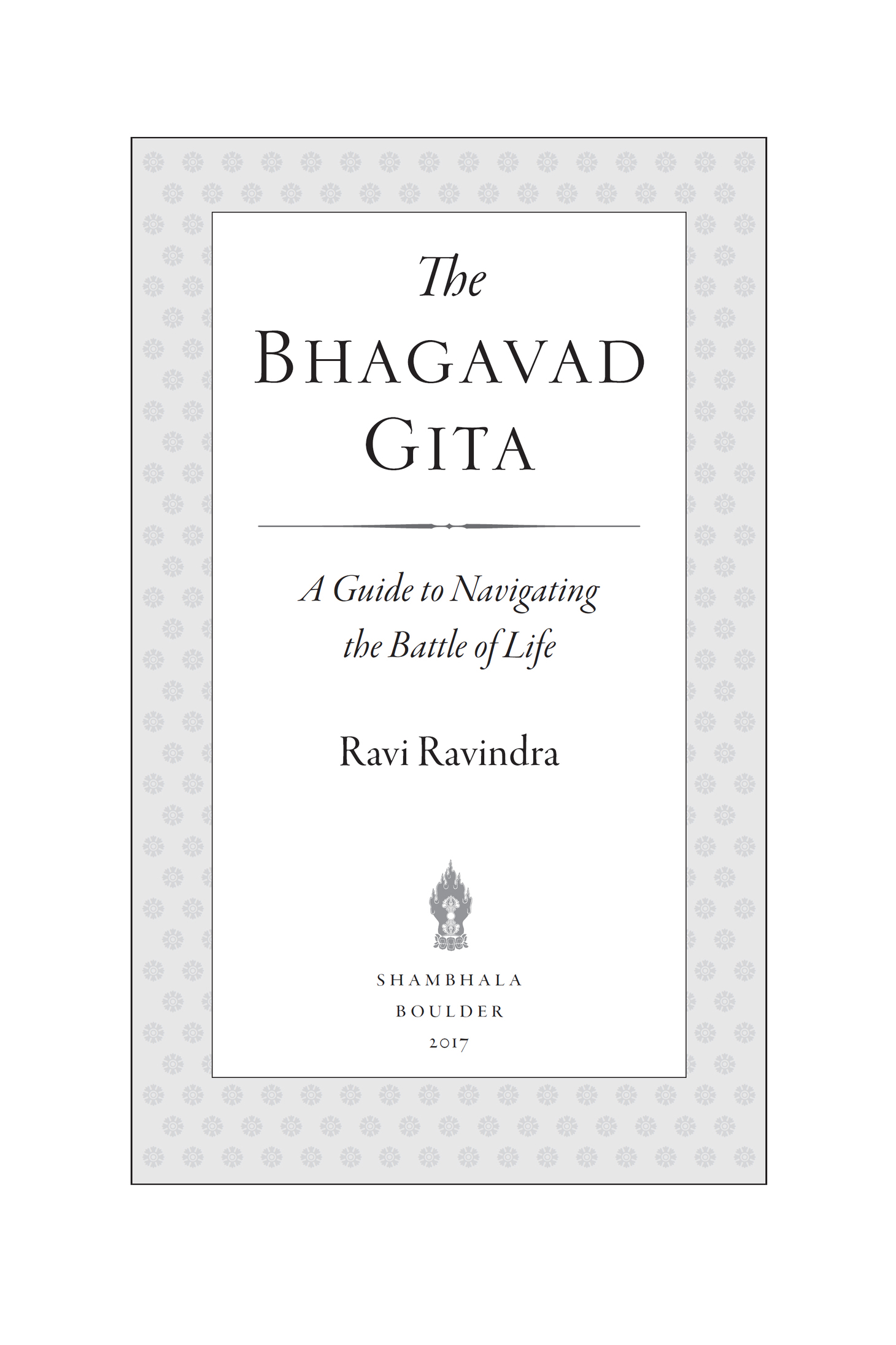Contents
This is a commentary on the Bhagavad Gita that is in a class of its own. The background story from the Mahabharata and its characters come alive, even while the focus remains on the Gita. Almost no commentary on this ancient scripture emphasizes a historical battle but rather, all take pains to point to it as a metaphor for the battle within. However, none so superbly take us within, to the very place of the battle raging within each one of us, as Ravi Ravindras does. In so doing he truly makes alive the promise of Krishna in chapter six that, Yoga is breaking the bond with suffering.
S WAMI A MBIKANANDA S ARASWATI , F OUNDER OF T RADITIONAL Y OGA A SSOCIATION , UK
Ravi Ravindras translation of the Bhagavad Gita allows these sacred teachings to penetrate our hearts, open our minds, and call us to action. His commentary on this classic text of yoga invites a sincere and practical engagement with the text and raises many questions for our lives. Ravindras intimacy with the spiritual traditions of both the east and the west brings a rich and fertile look into the meaning of these teachings.
K IRA S LOANE , D IRECTOR OF Y OGA A NYTIME
Ravindras book speaks so splendidly (yes, with a radiant splendor,) to the heart-mind of the student: he has surely listened so well to Krishna that the words fairly sing (after all, it is a song) in ones being, touching both heart and mind! I particularly appreciated the several footnotes that opened up the fullness in meaning of so many of the Sanskrit words in the original text. It is a work to be lived with, to be turned to again and again, as it speaks to the core of ones being.
J OY M ILLS , F ORMER P RESIDENT OF THE T HEOSOPHICAL S OCIETY IN A MERICA AND A USTRALIA
Shambhala Publications, Inc.
4720 Walnut Street
Boulder, Colorado 80301
www.shambhala.com
2017 by Ravi Ravindra
All rights reserved. No part of this book may be reproduced in any form or by any means, electronic or mechanical, including photocopying, recording, or by any information storage and retrieval system, without permission in writing from the publisher.
eBook design adapted from printed book design by Steve Dyer
Cover design by Gopa & Ted2, Inc.
LIBRARY OF CONGRESS CATALOGING-IN-PUBLICATION DATA
Names: Ravindra, Ravi, author.
Title: The Bhagavad Gita: a guide to navigating the battle of life / Ravi Ravindra.
Description: First edition. | Boulder, Colorado: Shambhala, 2017. | Includes bibliographical references.
Identifiers: LCCN 2016022285 | ISBN 9781611804102 (paperback: alk. paper)
eISBN9780834840621
Subjects: LCSH: BhagavadgtCriticism, interpretation, etc. | BISAC: RELIGION / Hinduism / Sacred Writings. | RELIGION / Hinduism / General. | PHILOSOPHY / Eastern.
Classification: LCC BL1138.66 .R39 2017 | DDC 294.5/924047dc23
LC record available at https://lccn.loc.gov/2016022285
v4.1
a
In memory of my spiritual Mother
L OUISE W ELCH
who first encouraged me to explore the Bhagavad Gita
Be firm in yoga and arise!
K RISHNA IN THE B HAGAVAD G ITA 4.42
Offering all your actions to Me,
Mindful of your deepest Self,
Without expectation, without self-occupation,
Struggle without agitation.
K RISHNA IN THE B HAGAVAD G ITA 3.30
Seek not to follow in the footsteps
of the wise ones of old;
seek what they sought.
M ATSUO B ASHO
Contents
Acknowledgments
I WAS ELEVEN when my father introduced me to a priceless gem. My father loved poetry and often read poems aloud to anyone who happened to be passing by. It was his idea of being on vacationhed sit outside in the sun with a pile of poetry books and read for as long as he could. On one occasion, my father read to me from the Bhagavad Gita. At the time, I had no interest in the Gita. I didnt even know what it was and I didnt care. As my father read, I listened politely, never dreaming I was about to hear something that would stay with me the rest of my life. He read in Sanskrit what I later learned is the nineteenth shloka in the seventh chapter, and translated it for me: At the end of many births, a wise person comes to Me, realizing that all there is is Krishna (Vsudeva). Such a person is a great soul and very rare.
Then my father turned to me and said, with a seriousness that stays deeply in my heart, You know, Ravi, I can tell you what these words say but I dont know what it really means, and I wish for you that you will find a teacher or a teaching that will assist you to understand its real meaning.
Largely because of the depth of feeling with which my father spoke, that shloka made a great impact on me and it has been my lifes project to realize that all there is is Krishna. Whenever I read anything from the Gita, my father seems to be sitting close by reminding me not only to utter these words, but to really know this in the depth of my being.
My great debt is to Mrs. Louise Welch who strongly encouraged me to explore the Bhagavad Gita seriously. I had grown up in India listening to many people, especially the priests, frequently quoting from the Gita, but I could not persuade myself that this text had made any difference in their lives. Mrs. Welch suggested that I needed to wrestle with Krishna to find the wisdom in this text. She herself had been a student of A. R. Orage, the brilliant editor of the New Age, regarded by T. S. Eliot as Londons best literary critic of his time. According to Mrs. Welch, the Bhagavad Gita was one of the most vital and permanent influences in his life. The famous engraver Eric Gill carved on the gravestone of Orage his favorite quotation from the Gita: The wise grieve neither for the living nor for the dead. Never at any time was I not, nor thou, nor these princes of men, nor shall we ever cease to be. The unreal has no being, the real never ceases to be.
I first met Mrs. Welch in 1968. A few years later, she invited me to give some talks about the Gita in a gathering of serious searchers in the Gurdjieff teaching. Later, when I was working fairly closely with Madame Jeanne de Salzmann, Gurdjieffs closest disciple, she and her son, Michel de Salzmann, also strongly encouraged me to speak about the Gita.
Around the same time, I met and heard J. Krishnamurti on several occasions, and in general he seemed to dismiss all the traditional texts, including the Bhagavad Gita. In a conversation on one occasion he asked me, Sir, what do you think is wrong with India? I looked at him wishing to hear his perspective. He said, The trouble with India is that the Brahmins have forgotten the tradition. I do not believe that Krishnamurti was against the tradition; he was saddened and appalled by what he found being carried on in the name of the tradition, a betrayal of the real tradition.



